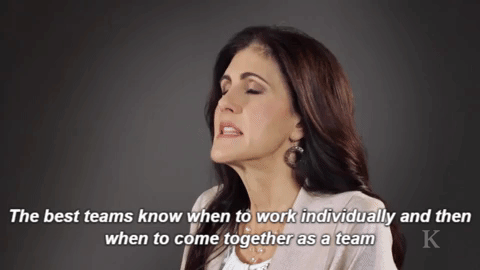The 4 Subconscious Secrets to Influence Anyone

How many times have you tried to influence, enroll, engage someone in the past 2 weeks?
How many times were you successful?
Now more than ever leaders need to be able to influence outcomes. Influence is no longer about doing something to someone to get what you want. Real influence is about forging deep connections quickly, stepping into someone’s world authentically, and striving for consistent win/win outcomes.
Engagement–not Manipulation
Meta Programs are one of the most potent neuroscience techniques we teach salespeople and leaders because they enable one to most deeply step into someone else’s world. When we train sales teams on Meta Programs in selling scenarios, they close sales up to 50% faster. When we work with marketing teams, their messages resonate with prospects demand generation increases by 300%+.
Why? The same reason for all the results: we build greater trust with the recipient of the message by profoundly increasing safety, belonging, and mattering.
Meta Programs are equally useful whether the person you’re addressing is a team member, a board member, a sales prospect, a client, or the recipient of a marketing message. Speaking to someone using their Meta Programs enables us to step into their world, ensures profound rapport, and leads to outcomes that are better for everyone—while fostering deep connection and trust.
Meta Programs operate on a range: we don’t usually fall all the way to one side or the other as an absolute. They are also contextual, meaning that you may have one set of meta programs in the context of work, another set when it comes to money, and yet another for romantic love. Though we generally have an overall set for how we approach life.
The Four Subconscious Secret Codes
There are sixty Meta Programs, per Leslie Cameron-Bandler. I’ll cover four briefly to get you started affecting outcomes:
Toward-Away
| Toward | Away | |
| Description/motivations | Motivated to achieve goals; to move toward reward. | Motivated to solve problems and avoid risk taking / pain. |
| Influential words | “Get,” “attain,” “achieve,” and synonyms of these. | “Avoid,” “prevent,” “assess,” “consider,” and synonyms of these. |
| Possible conflicts | The Toward person may discount the Away person’s point of view, may think he’s dragging his feet or just doesn’t “get it.” The Away person may feel the Toward person is all about the vision, when what really matters is the execution of it and risks. Disrespect on both sides can cause tremendous tension. | |
Decoder Questions: Ask, “What do you want in your work [or something else important to them]?” Keep asking questions like “What else do you want?” or “What else is important?” Notice what descriptor words they use—do they want to achieve/attain or prevent disaster/hold the fort down?
Options-Procedures
| Options | Procedures | |
| Description/motivations | Motivated by choice, possibility, variety; will give you a list of criteria they want. | Motivated by following a proven and reliable process; will lay out a step-by-step process or need one provided for them. |
| Influential words | “Variety,” “choice,” “possibility,” and synonyms of these. | “The right way,” “series of steps,” “reliable process,” and synonyms of these. |
| Possible conflicts | When an Options person presents too many choices, a Procedures person may shut down or feel so overwhelmed that he won’t know how to proceed. When a Procedures person tries to force a process on an Options person, they’ll feel restricted. A better approach is to “interview” the Options person in order to determine the procedures he needs. | |
Decoder Questions: Ask, “Why did you choose your current work/job/car?” An Options person will respond with his criteria, or a list of features or traits—for example, for a car: “It gets great gas mileage, it’s black, and it’s fast.” A Procedures person will respond with a story that details a process through which the car was the end point: “Well, you know, it’s a funny thing. My old car was breaking down all the time and my aunt Sue was visiting and . . .”
General-Specific
| General | Specific | |
| Description/motivations | Motivated to summarize and think at a high level. Looking at the forest. | Motivated by details and sequences. Knows how many trees the forest contains, how many leaves each tree has. |
| Influential words | “Overview,” “the big picture,” “in general,” “the point is,” and synonyms of these. Start with setting frame or context. | “Specifically,” “exactly,” “precisely,” and synonyms of these. Start at detail level and build to conclusion. |
| Possible conflicts | A General person may gloss over details or not take the time to drill down on them, either dismissing the Specific person for being too nitpicky or for bringing up info that seems (to the General person) irrelevant. The Specific person may see the General person as not committed, unrealistic, or irresponsible. | |
Decoder Questions: Ask questions like “How do you brainstorm challenges at work?”; “How do you solve problems?”; “Describe your weekend”; “What do you do for fun?” Notice which influential words they use, and if they start with specific details or with an overall summary statement.
Active-Reflective
| Active | Reflective | |
| Description/motivations | Motivated to take action immediately; charge ahead. | Motivated to analyze, wait, and react when appropriate. |
| Influential words | “Get it done,” “now,” “don’t wait,” and synonyms of these. | “Consider,” “could,” “understand,” “think about,” and synonyms of these. |
| Possible conflicts | There is high potential for the Active person to dismiss the Reflective person as a passive order taker. This is far from the truth. The Reflective person can see the Active person as acting for the sake of action and not thinking her actions through. | |
Decoder Questions: Ask questions such as “How do you solve problems at work?”; “How do you discover opportunities or challenges?”; “When do you know when your attention is needed?”; “How do you learn new things?” Listen for action versus analysis.
Now You’re Speaking My Language!
Meta Programs are so sophisticated that most people find further instruction required (see my new book SmartTribes). That said, if you practice these techniques they will improve your communication and influence profoundly.
Meta Programs are the filters through which we see the world, the ways our brains process the world and determine how we react to it. When we speak to someone using their Meta Programs, they not only hear what we’re saying but they also feel they belong with us, that we are similar, that we “speak the same language.”
We’re safe.
We’re of the same tribe.
We want the same things.
Christine Comaford of SmartTribes Institute applies the latest neuroscience research to help companies build vibrant engaged culture, rich and committed leadership, consistently compelling sales and marketing.
If you want to learn more check out one of Christine's four On Demand Seminars on our website!



